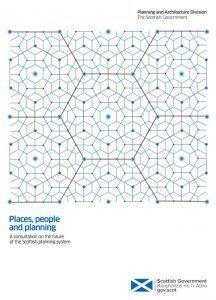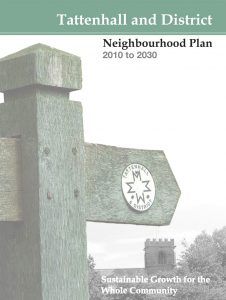In the first article in our new series on emerging developments in community empowerment, Dr Steve Rolfe explores policy considerations towards engaging a wider range of people in the planning process in Scotland and England. Dr Rolfe worked for 15 years in local government, in a variety of community development and regeneration roles, before shifting to academia to complete a PhD examining the impacts of community participation policy in Scotland and England. He is now working on a research project which is exploring the impacts of social enterprise in the housing sector.
A key principle in the Scottish Government’s recent consultation on the future of the Scottish planning system((Scottish Government 2017b. Places, people and planning: A consultation on the future of the Scottish planning system. Edinburgh: Scottish Government. http://www.gov.scot/Resource/0051/00512753.pdf)) is the notion that, “people make the system work”. The Government are clearly keen to make the planning process more empowering, in line with the broader emphasis on Community Empowerment((Scottish Government. 2017a. Community empowerment and engagement [Online]. Edinburgh: Scottish Government. http://www.gov.scot/Topics/People/engage)).

The Scottish Government’s 2017 planning system consultation closed for responses earlier this month
In practical terms, the consultation puts forward proposals for communities to be able to develop their own ‘local place plans’, and for encouraging a wider range of people to get involved in planning, particularly young people (as suggested by the earlier Independent Review((Beveridge, C., Biberbach, P. & Hamilton, J. 2016. Empowering planning to deliver great places: An independent review of the Scottish planning system. Edinburgh: Scottish Government. http://www.gov.scot/Resource/0050/00500946.pdf))).
These ideas surely provide welcome foundations on which to redevelop the planning system, but they are not without their challenges.
The English Experience
It may be useful, therefore, to draw on research evidence from south of the border, where Neighbourhood Planning has been in place for more than five years. Whilst there is little comprehensive research as yet, case study evidence from Tattenhall, provides some important pointers towards the benefits and potential pitfalls of ‘local place plans’, and the challenges of engaging a wider range of people in planning.
 As a relatively affluent rural parish within commuting distance of Chester and Liverpool, Tattenhall has experienced considerable development pressure. So Tattenhall Parish Council (TPC) were pleased to be chosen by the Department of Communities and Local Government in 2011 as a Neighbourhood Planning ‘front runner’, hoping that the ‘new community rights’ in the Localism Act would give them some control over local development.
As a relatively affluent rural parish within commuting distance of Chester and Liverpool, Tattenhall has experienced considerable development pressure. So Tattenhall Parish Council (TPC) were pleased to be chosen by the Department of Communities and Local Government in 2011 as a Neighbourhood Planning ‘front runner’, hoping that the ‘new community rights’ in the Localism Act would give them some control over local development.
After a multi-stage process of consultation and engagement with the local community, involving workshops, surveys and specific approaches to engage particular groups, the Tattenhall Neighbourhood Plan successfully passed its Examination and was approved at referendum (as required by the Localism Act) in 2013 with a 96% majority on a 52% turnout.
Some four years on, there can be little doubt that Tattenhall’s Neighbourhood Plan has had significant impact, with at least three large-scale planning applications being refused because they conflicted with the policy restricting new developments to no more than 30 housing units. Perhaps unsurprisingly, however, housing developers have consistently challenged the Plan. Having failed to remove the 30-unit policy at the Examination stage and to block the referendum, two developers launched a judicial review.
Bullying & Planning Speak
Whilst the case was eventually dismissed, research interviews with local activists and community members highlight a number of issues which may be pertinent as the Scottish Government develop the proposal for ‘local place plans’.
Firstly, the laudable aim of enabling communities to gain more control over local planning may have implications for individuals and community organisations that are not always predictable or welcome. Tattenhall activists described the experience of being bullied throughout the Examination and the court case:
“This is a game for the lawyers at the end of the day. They interpret every single word, every single syllable, in a way that meets their clients’ needs… You got the impression that these barristers felt that planning law belonged to the developers – that it was their game and anyone else who got involved were just little kids.”
Whilst TPC were able to draw on substantial professional expertise from within the community, as well as their own experience of producing a Parish Plan and Village Design Statement, there were clearly periods in which the personal responsibility and risk involved felt excessive.

The influential Tattenhall Neighbourhood Plan was approved by a local referendum in 2013
Moreover, whilst the Scottish Government have recognised the need to build community capacity, there has to be a concern about the substantial differences between communities, as a Spatial Planning Officer in Cheshire suggested:
“[some communities] have the professionals within their area. And I think not all communities have the technical and professional expertise to call on, and I think that’s a difficulty with the system – that, if it’s not there, it’s very difficult to be able to bring forward plans.”
Indeed, even in an area with Tattenhall’s skill levels, community members complained about the need to convert their ideas into ‘planning speak’:
“It rather destroys the point of local planning, if documents have to be written at this level of sophistication in order to survive challenges at judicial review.”
And whilst TPC received intensive, hands-on assistance from Council officers throughout the process, subsequent cuts to the Spatial Planning team raises questions about whether capacity building support can be delivered in an era of austerity. This is a particular concern given the emerging evidence from across England, which suggests that disadvantaged areas are significantly under-represented amongst communities engaged in Neighbourhood Planning((Turley Associates 2014. Neighbourhood Planning: Plan and deliver? Manchester: Turley Associates. http://www.turley.co.uk/sites/default/files/uploads/news/Turley_%20Neighbourhood%20Planning_March_2014.pdf)).

Theory and Practice
Even within individual communities there may be significant disparities in terms of capacity or willingness to engage in local planning. TPC worked hard to engage as many people as possible, even running a rave for local youngsters, for which the entry fee was completion of a short survey about the future of the area. However, they remained realistic about those sections of the community who were less engaged, particularly from more disadvantaged households. As SURF have argued in their response to the consultation((SURF 2017. SURF response – future of the Scottish planning system. Glasgow: Scottish Urban Regeneration Forum. https://www.surf-old.local/wp-content/uploads/2013/06/SURF-Consultation-Response-Future-of-Scottish-Planning-System.pdf)), ensuring more people are involved is not simple, although there is much to learn from existing good practice, such as SURF Award winners.
None of this evidence undermines the basic principles that people make the planning system work. Reforming the planning system to give more power to communities is surely to be welcomed, but the experience from Tattenhall highlights the challenges in delivering effective engagement and the complications of ‘local place planning’.
Indeed, as part of the same research project, a Community Council in a Scottish urban area were asked if they would welcome the idea of Neighbourhood Planning (before it was even mooted by the Planning Review) and their response was almost entirely negative – fear of additional responsibility outweighed the potential gains of additional power.
Building a system that gives more planning power to all communities and all sections of those communities will require significant investment to support community organisations with the technical aspects of planning and the complex work of community engagement. Without such investment, ‘local place planning’ could expose community members to daunting risks and responsibilities, and exacerbate inequalities within and between communities.
